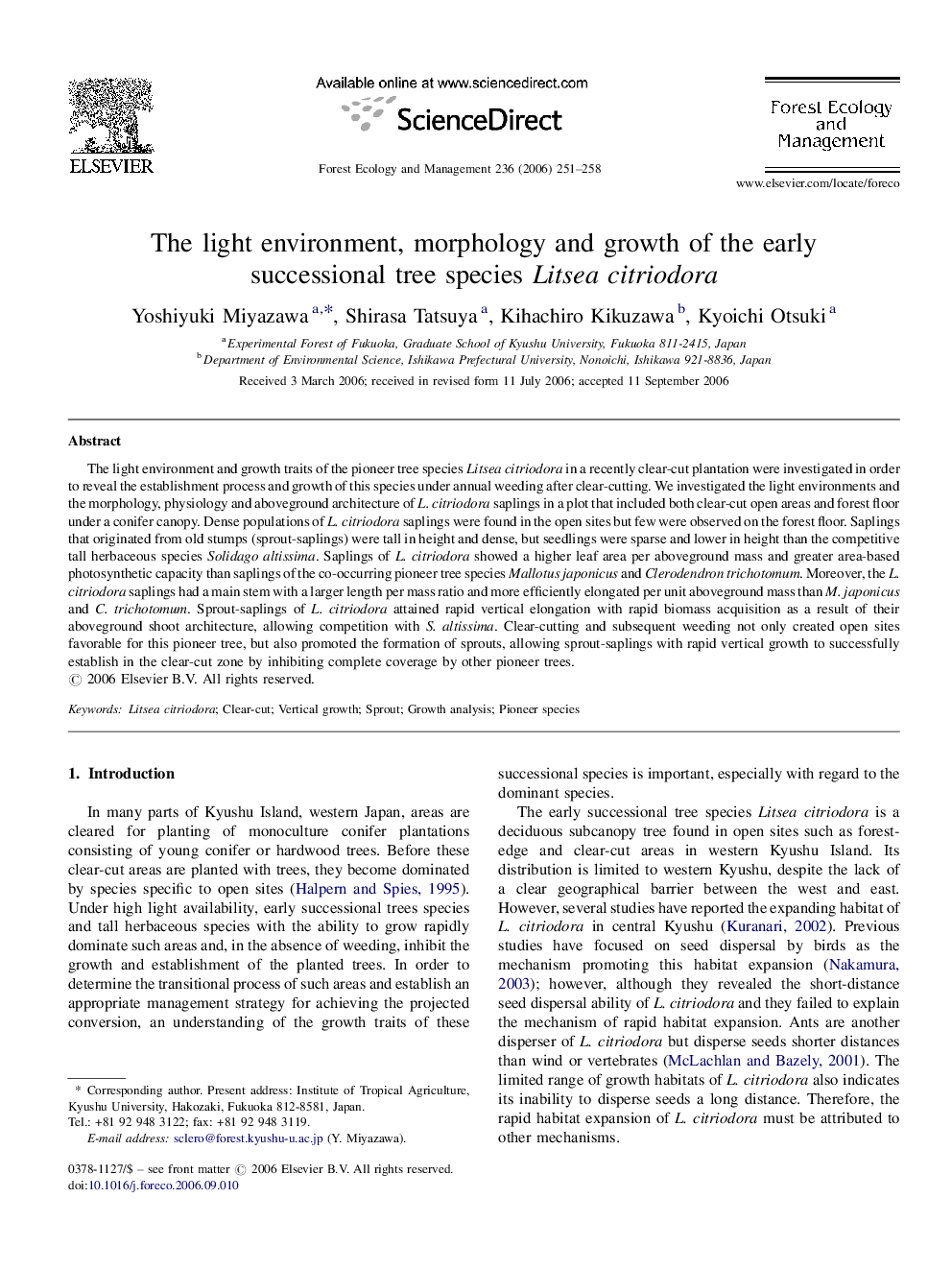| Article ID | Journal | Published Year | Pages | File Type |
|---|---|---|---|---|
| 90001 | Forest Ecology and Management | 2006 | 8 Pages |
The light environment and growth traits of the pioneer tree species Litsea citriodora in a recently clear-cut plantation were investigated in order to reveal the establishment process and growth of this species under annual weeding after clear-cutting. We investigated the light environments and the morphology, physiology and aboveground architecture of L. citriodora saplings in a plot that included both clear-cut open areas and forest floor under a conifer canopy. Dense populations of L. citriodora saplings were found in the open sites but few were observed on the forest floor. Saplings that originated from old stumps (sprout-saplings) were tall in height and dense, but seedlings were sparse and lower in height than the competitive tall herbaceous species Solidago altissima. Saplings of L. citriodora showed a higher leaf area per aboveground mass and greater area-based photosynthetic capacity than saplings of the co-occurring pioneer tree species Mallotus japonicus and Clerodendron trichotomum. Moreover, the L. citriodora saplings had a main stem with a larger length per mass ratio and more efficiently elongated per unit aboveground mass than M. japonicus and C. trichotomum. Sprout-saplings of L. citriodora attained rapid vertical elongation with rapid biomass acquisition as a result of their aboveground shoot architecture, allowing competition with S. altissima. Clear-cutting and subsequent weeding not only created open sites favorable for this pioneer tree, but also promoted the formation of sprouts, allowing sprout-saplings with rapid vertical growth to successfully establish in the clear-cut zone by inhibiting complete coverage by other pioneer trees.
